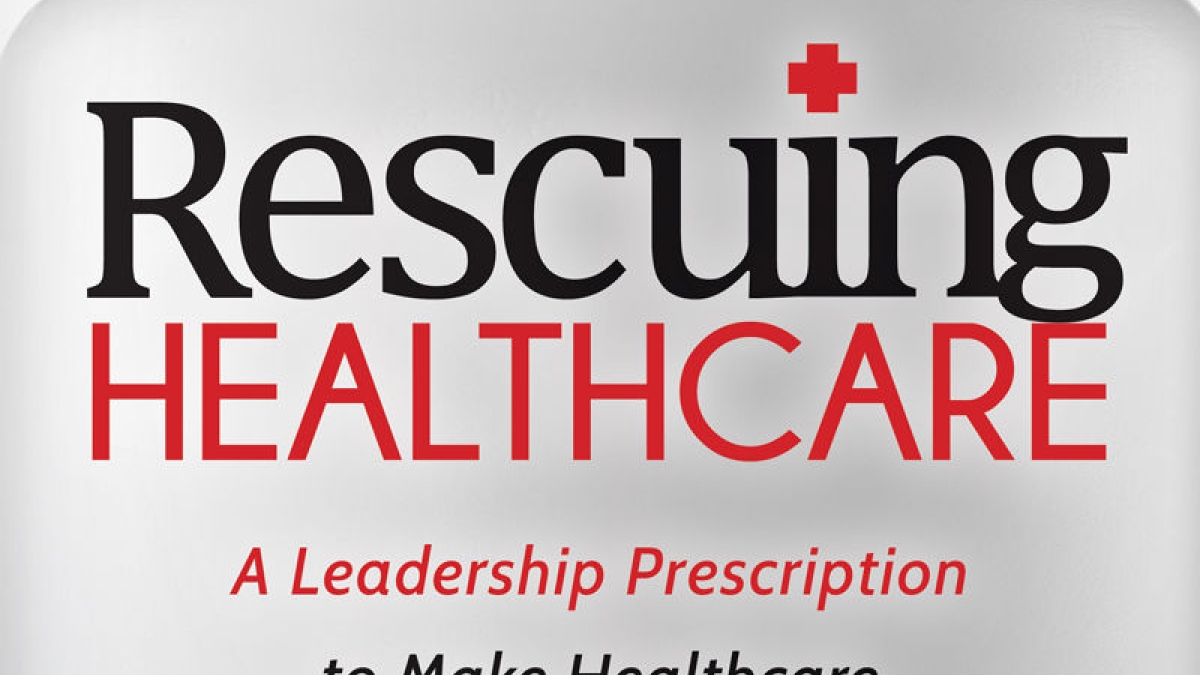The American health-care delivery system is breaking. It is faltering in so many ways that it can seem like the overall system is beyond fixing. It has become contentious and politicized to the point where it is commonly fought over by politicians, debated endlessly by Americans and yet no substantive changes are enacted that address the system’s core goal — providing quality care at a reasonable cost.
The only way out of this quandary, according to a new book by two health-care leaders, is leadership itself. In “Rescuing Healthcare: A Leadership Prescription to Make Healthcare What We All Want It to Be,” Denis Cortese and Antony Bell offer a radical and overlooked solution to the dissatisfaction and confusion of the American health-care delivery system: leadership reform.
Cortese, a Foundation Professor at Arizona State University and former president and CEO of the Mayo Clinic, and Bell, CEO of Leader Development Inc., a firm that helps leaders in several sectors transform their organization, state that to get the health-care industry back on track, medical practitioners need to be empowered and given the leeway to create meaningful change in their fields. In exchange they assume responsibility and accountability for their results.
“The U.S. now spends more than $3.5 trillion each year on health care, but we get little for the money,” said Cortese, director of ASU’s Healthcare Delivery and Policy Program. “We get widely varying results across the country, and on average the U.S. is in the middle-to-lower rank among developed countries. The reason for this is because the system is a pay-for-service system. It is not a system that pays for results or is geared towards preventing problems.”
Cortese and Bell say the way out of this is leadership, all kinds of leadership. But two types stand out: organizational and operations leadership.
On the organizational level, what is desperately needed from senior leaders — including doctors, nurses and administrative leaders and politicians — is a shared vision for health-care delivery. A clear vision would help focus the system on keeping people healthy and active, it would efficiently treat people and it would help patients with chronic conditions lead fulfilling lives while avoiding unnecessary emergency-room visits and hospital admissions.
On the operational side, Cortese said what are needed are people who get things done and who can accomplish the goals set by the shared vision of organizational leaders.
Denis Cortese
“These are the folks who work on the front lines, deal with the details and are monitoring performance and working relentlessly toward improvements to these goals,” he said. “For example, if U.S. government leaders had a clear vision for the use of health information technology then they wouldn’t have spent more than $30 billion in the last eight years and not have interoperability of health-care IT systems.”
What a clear vision and people who can carry out that vision would mean is a uniform health-care system large enough to carry a vast number of people, yet flexible enough to develop new models of care at local and regional levels that are customized to a wide range of services and needs of patients.
“Instead, our political leadership has spent, wasted, so much time talking about insurance for all,” Cortese said. “It’s a noble and attainable goal, but even Obamacare wasn’t designed to provide insurance for all. If our political leaders had a clear vision and shared commitment to insurance for all citizens they might address one question: Why can’t all citizens have what our government employees have?"
Federal employees have a selection of private insurance plans with varying benefit packages that individuals can chose for themselves, drugs are covered, there is support for paying the premiums for basic plans, people can pay more for more coverage if they desire. And the plan has full bipartisan support.
“So the goal for health-care insurance that could have been, and still can be, accomplished by political leaders would be to say to the American people: ‘You get what we have,’” Cortese added.
Most importantly, the book goes beyond simply insurance. After all, getting everyone insured will not solve the fundamental problem of our health-care delivery system, which provides poor and varied results at high costs, Cortese said.
“Look at Medicare, everyone like myself, over 66 years of age has insurance coverage. Yet increasing numbers of us cannot find a doctor; we get widely variable access, outcomes, safety and service, all at an unsustainably high cost to the federal government. This has gotten to the point where financial viability of Medicare is at risk. So just having insurance does not solve the biggest problem of what do we get for the $3.5 trillion spending on health-care delivery?”
“This is where a clear vision and strong leadership is needed,” Cortese stressed.
“The biggest winners will be the public and the patients who benefit from new models of care that prevent problems from developing, cures us when possible, keeps us functioning well when a cure is not possible, and keeps us comfortable as we reach end of life,” he said.
“Rescuing Healthcare: A Leadership Prescription to Make Healthcare What We All Want It to Be” is published by Morgan James Publishing.
More Science and technology

ASU water polo player defends the goal — and our data
Marie Rudasics is the last line of defense.Six players advance across the pool with a single objective in mind: making sure that…

Diagnosing data corruption
You are in your doctor’s office for your annual physical and you notice the change. This year, your doctor no longer has your…
Large-scale study reveals true impact of ASU VR lab on science education
Students at Arizona State University love the Dreamscape Learn virtual reality biology experiences, and the intense engagement it…



